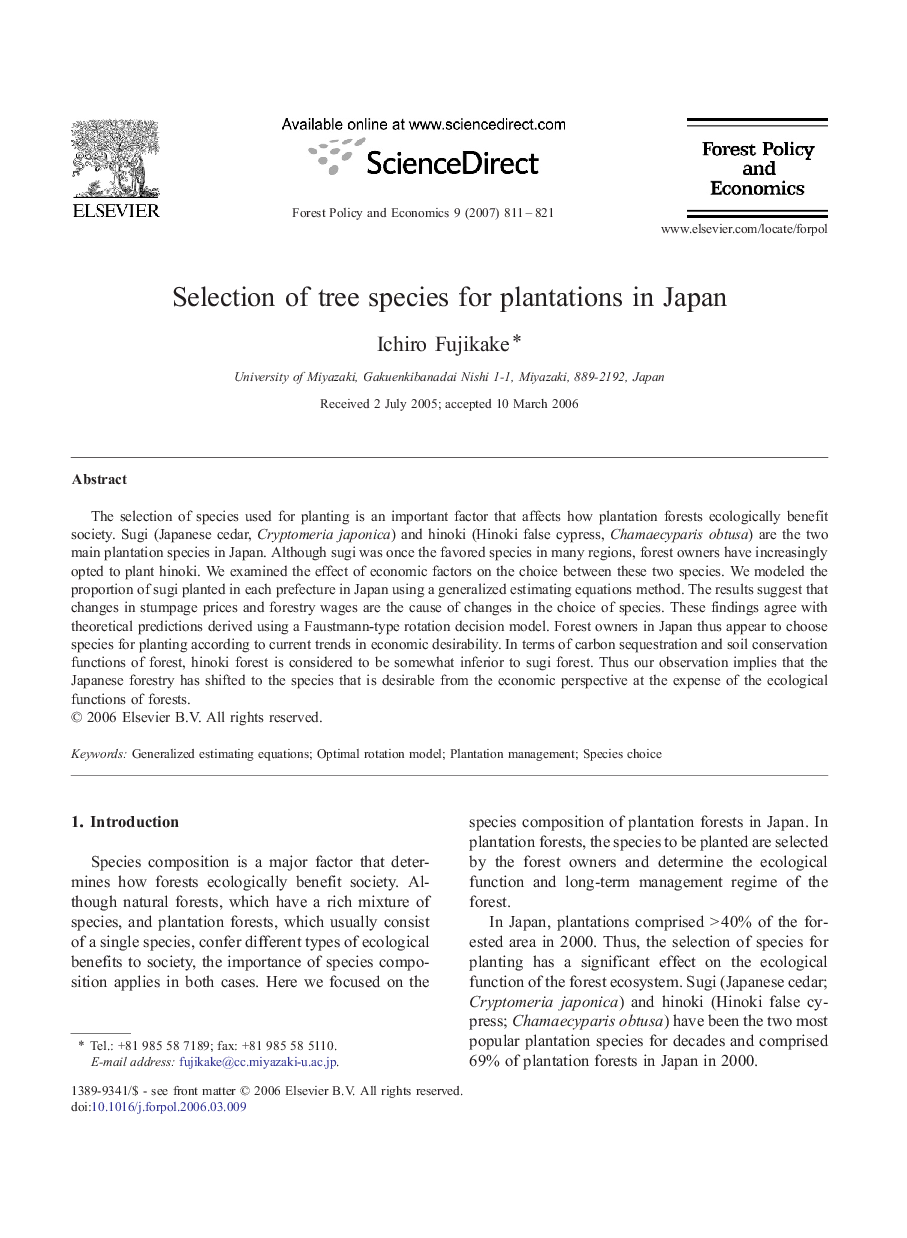| کد مقاله | کد نشریه | سال انتشار | مقاله انگلیسی | نسخه تمام متن |
|---|---|---|---|---|
| 92254 | 159931 | 2007 | 11 صفحه PDF | دانلود رایگان |

The selection of species used for planting is an important factor that affects how plantation forests ecologically benefit society. Sugi (Japanese cedar, Cryptomeria japonica) and hinoki (Hinoki false cypress, Chamaecyparis obtusa) are the two main plantation species in Japan. Although sugi was once the favored species in many regions, forest owners have increasingly opted to plant hinoki. We examined the effect of economic factors on the choice between these two species. We modeled the proportion of sugi planted in each prefecture in Japan using a generalized estimating equations method. The results suggest that changes in stumpage prices and forestry wages are the cause of changes in the choice of species. These findings agree with theoretical predictions derived using a Faustmann-type rotation decision model. Forest owners in Japan thus appear to choose species for planting according to current trends in economic desirability. In terms of carbon sequestration and soil conservation functions of forest, hinoki forest is considered to be somewhat inferior to sugi forest. Thus our observation implies that the Japanese forestry has shifted to the species that is desirable from the economic perspective at the expense of the ecological functions of forests.
Journal: Forest Policy and Economics - Volume 9, Issue 7, April 2007, Pages 811–821